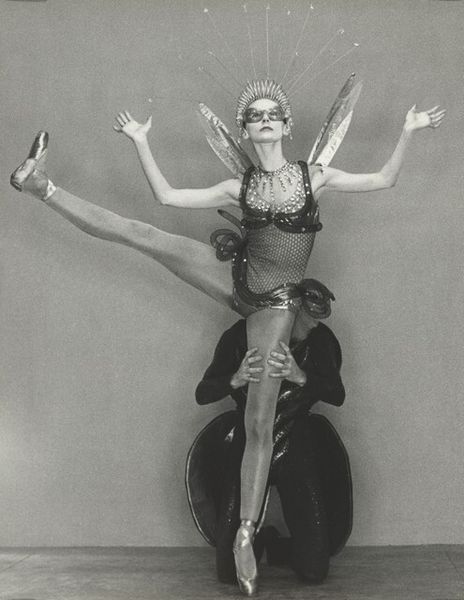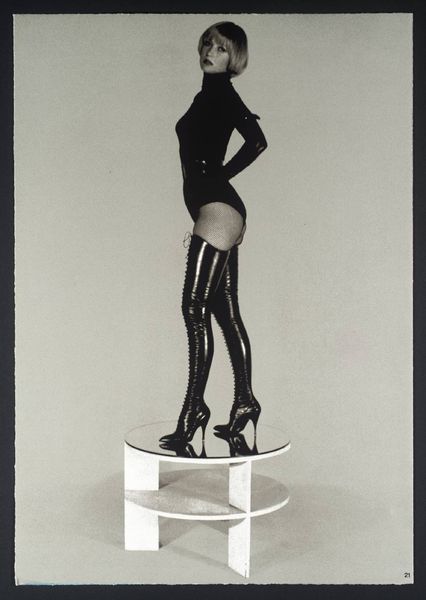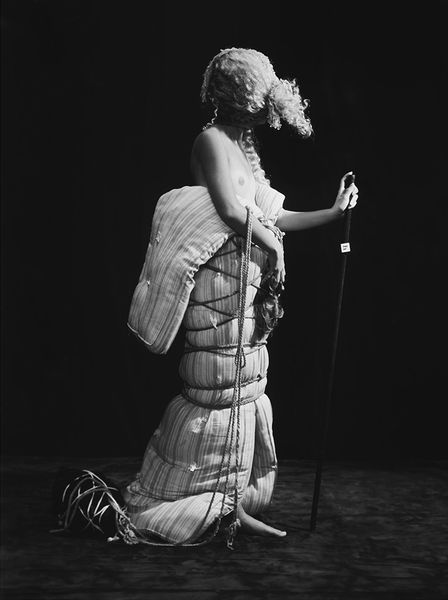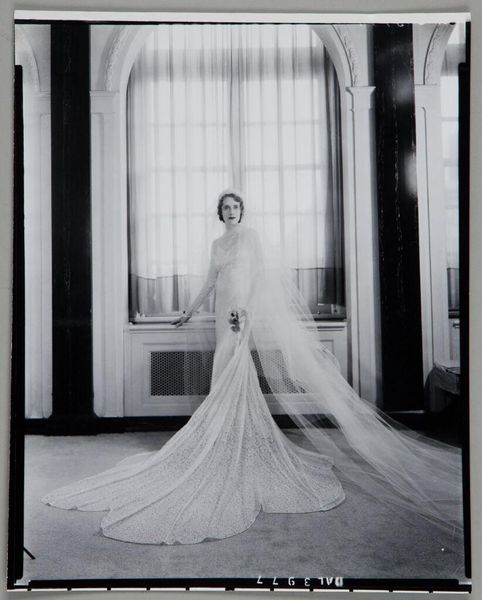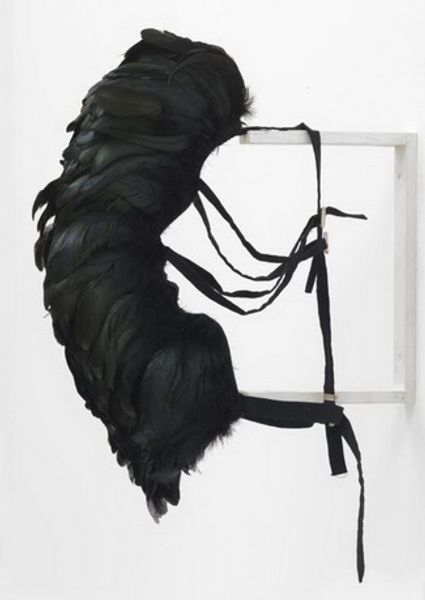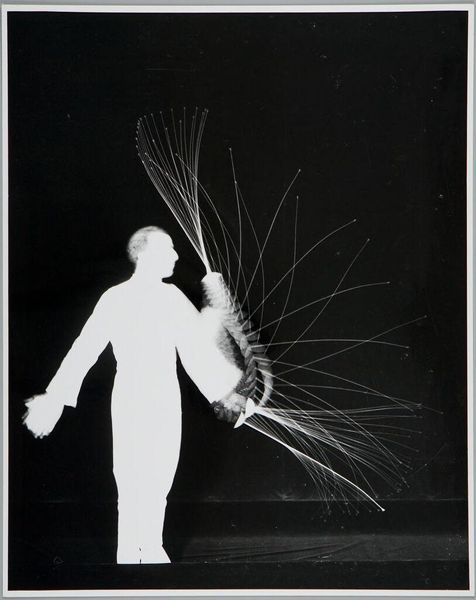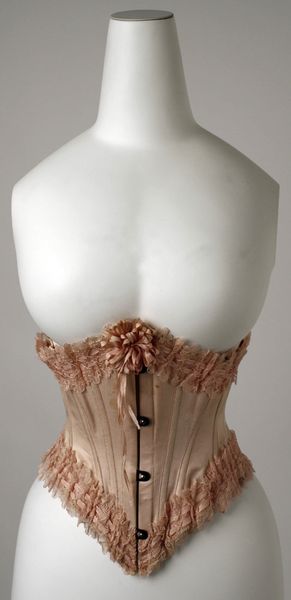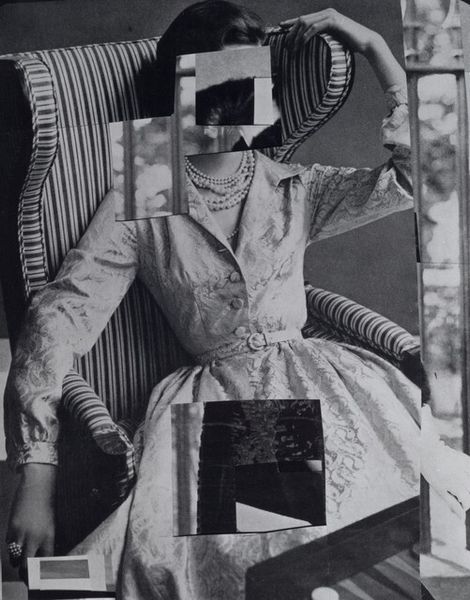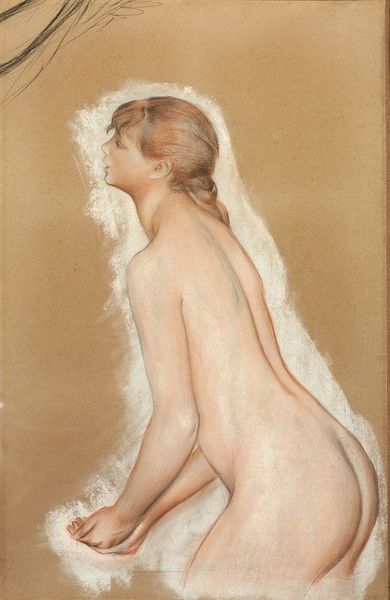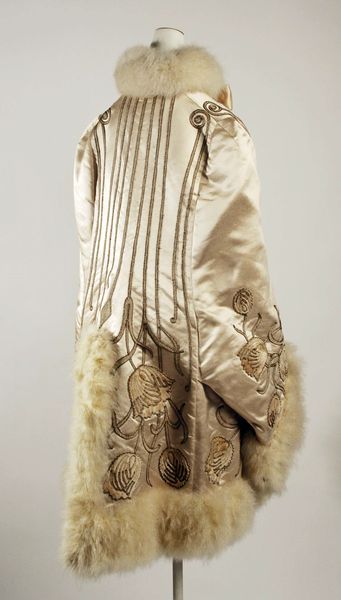
performance, found-object, sculpture, installation-art
#
performance
#
conceptual-art
#
postmodernism
#
found-object
#
body-art
#
sculpture
#
installation-art
#
nude
Copyright: Rebecca Horn,Fair Use
Curator: This artwork is a still from Rebecca Horn's 1978 performance piece, "The Feathered Prison Fan," combining found objects and her own body. Editor: My initial impression is a feeling of obscured intimacy, like something precious and vulnerable hidden behind this overwhelming plumage. It speaks to confinement, yet also to potential escape. Curator: I agree. The piece engages with notions of feminine identity, particularly the ways women are both adorned and constrained. The feathers, while beautiful, also act as a barrier, obscuring the figure’s agency. Horn’s work during this period often used costume as a means of exploring physical and psychological boundaries within gendered expectations. Editor: The fan itself is a powerful symbol – traditionally an instrument of coy communication, but here, exaggerated and almost weaponized. Its scale subverts its delicate nature, turning it into something almost monstrous. It feels like a reversal of its traditional symbolism into something sinister and unwieldy. Curator: That unwieldiness is crucial. It echoes a broader post-structuralist feminist critique of beauty standards, showing the way beauty can both empower and imprison. By embedding the performer inside it, she explores that duality quite directly. The gaze, often objectifying, is confronted with an uncomfortably self-aware artwork. Editor: Absolutely. I see it relating to ritual and concealment too, referencing almost ancient ideas around transformation and feminine power found in feathers and ritualised covering, although these ideas have been completely reshaped into something more jarring and contemporary here. It is as if it's drawing upon old forms to show contemporary repression. Curator: Precisely. And looking through the lens of institutional critique, Horn's work here implicitly challenges the gallery space, disrupting established notions of viewer-object relationship. Editor: This encounter really shifted my sense of the object. It began as something quite ethereal but morphed into a really dense interplay of meaning regarding control and expression. Curator: Indeed; analyzing this through intersectional feminism provides powerful insights into not just women's historical plight, but also our ongoing renegotiation of imposed cultural parameters. It pushes us to consider performance art as more than just documentation but critical statements of embodied social criticism.
Comments
No comments
Be the first to comment and join the conversation on the ultimate creative platform.
